Mentions about her appear in the notes and memories of fellow prisoners from Kozielsk. She stayed there since December 1939 and shared the fate of thousands of other victims of the Katyn massacre. How did she end up in an officer's camp without even having a military rank? Why did she have to die?
Janina Lewandowska, née Dowbor-Muśnicka, on September 3, 1939, left home with a mobilization card in her pocket. She wanted to fight to defend Poland. She left her home and family behind, including the husband she had married 50 days earlier and with whom she hadn't even had time to live. She believed that her education in the field of radiotelegraphy and the motor pilot diploma from the Higher School of Pilotage at Ławica near Poznań could be of benefit to her homeland.
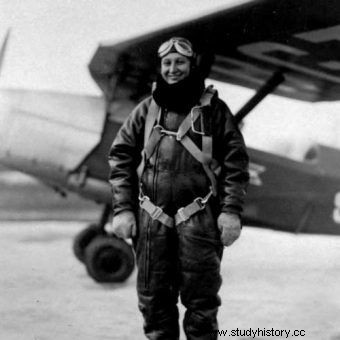
Janina Lewandowska was the only woman who was sent to the Kozielsk camp with a group of Polish officers.
However, she never took part in the fights. She didn't even reach the designated unit. She got stuck in Nekla bombed by the Germans. There she met the 3rd Air Base from Ławica, under the command of Captain Józef Sidor, evacuating to the east. She joined her. Together they forged their way through war-torn Poland until September 22, when, surrounded by Soviet tanks, they laid down their weapons and were taken prisoner. Lewandowska and Sidor were separated from the group and deported. First, they were sent to the camp in Ostaszków, and later they were transferred to Kozielsk.
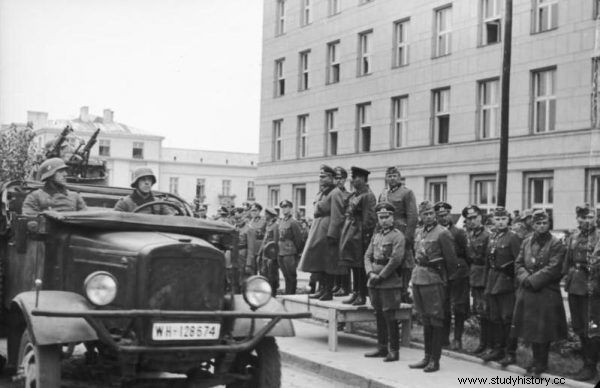
On the same day when Lewandowska was captured, the victory parade of the Wehrmacht and the Red Army took place in Brest.
With or without uniform?
Why was Janina, who was civilian and educated at a music conservatory, and not at an officers' school, sent to a military camp? Two of her friends from the Poznań Aero Club were not taken, who went with her to the war. They were both imprisoned in a transit camp. Also, lower rank pilots did not find their way to Ostaszków and Kozielsk.
An eyewitness to the event, Teodor Łagoda, claims that Lewandowska was interned with Sidor because she was already in the uniform of a second lieutenant pilot. Perhaps, as the journalist Wanda Dybalska suggested, she got it from airmen when she praised the pistols inherited from her father general. However, not everyone agrees to this version of events. The author of Lewandowska's fictionalized biography, Henryka Wolna-Van Das, is strongly opposed. As he claims:
She did not get the uniform until the camp, probably in Kozelsk. It happened on the initiative of the general council, headed by General Henryk Odrowąż Minkiewicz. They must have realized that Janka had been investigated by the NKVD, and in order to protect her from the guards, Soviet soldiers, they had given her the fictitious rank of aviation lieutenant and they found a uniform for her, too big anyway, because the girl was small.
According to Wolna-Van Das, Janina was imprisoned with officers because the NKVD found out that Janina was the daughter of Józef Dowbor-Muśnicki. The general did not have a good press among the communists. No wonder - in his memoirs published in 1935, two years before his death, he emphasized that he was the first to know about the "Bolshevik plague".
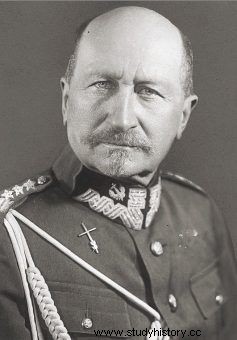
Józef Dowbor-Muśnicki, Janina's father, was a distinguished officer in the Polish Army.
Lewandowska has thus become an indirect victim of her own origin. During her internment, she gave false information:she changed her date of birth from 1908 to 1914, and her father's name was changed to "Marian". Was she really afraid of the reprisals that could face her if they knew whose daughter she was?
Camp memories
Regardless of when she obtained the uniform of a second lieutenant, Janina was already in the camp in an officer rank. And, according to the memoirs of fellow prisoners, it bore its title with dignity. Notes about it can be found, for example, in the diary of major Kazimerz Szczekowski. "There is an aviator in the camp - a brave woman, she has been enduring all the hardships and inconveniences of captivity with us for the fourth month, and is holding up exemplary" - he wrote.
Janina was housed in ... a closet under the stairs. Only this way could her fellow prisoners ensure her a minimum of privacy. . The place was soon jokingly referred to as "Bristol". More information about the life of Lewandowska in the camp was provided by the former voivode of Poznań, Rafał Adolf Bniński. Following the description of the biographer of Lewandowska, Józef Grajek, Jerzy A. Wlazło in his latest book "Chłopak z Katynia" reports:
He said he had a separate room and that she participated in the underground and religious life in the camp. He said that she had taken part in holy masses celebrated by Father Jan Ziółkowski and that she had baked hosts for Holy Communion.
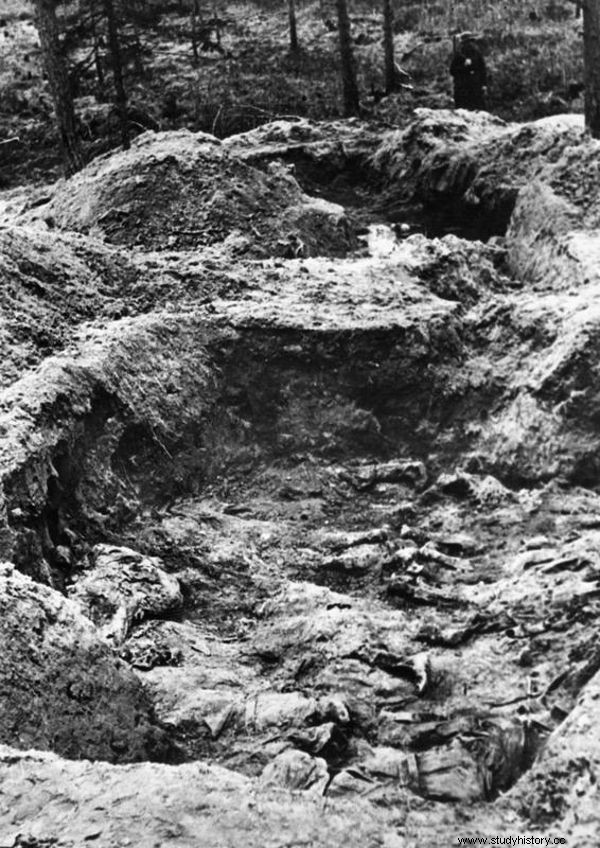
One of the mass graves in the Katyn forest during the exhumation in 1943.
Eventually, she too found herself in the line of those sentenced to death. Her name appeared on the list number 0401, position 53. These surnames were given by telephone by Moscow. It is estimated that the sentence was carried out after April 20. Perhaps on her 22nd, which is her 32nd birthday…
Search
Despite the fact that Lewandowska's body was discovered along with the remains of other victims of the Katyn massacre, her relatives had to wait over 50 years to confirm that their wife, sister and cousin had been murdered by the NKVD. They only knew - as informed by Bniński, who was a friend of the Dowbor-Muśnicki family - that Janina was in the Kozielsk camp.
Why was the family not informed about Lewandowska's death? All because the Germans, who compiled a list of the victims in 1943, did not include the woman's name on the list. “The clarity of the message counts in propaganda, so it's good to eliminate the facts that disturb it. A female officer, at that time an unusual thing, could have been considered such an unclear fact, thus disrupting the message, "explains Dr. Tomasz Szczepański, an employee of the Katyn Museum, in the book" Chłopak z Katyn ".
The fact of Lewandowska's death was concealed for the sake of "clarity of message". And soon… her remains also disappeared. As the writer and biographer Henryk Wolna-Van Das says:
Today, thanks to the discovery of Janka's skull, we already know that the whole situation was the work of German professor Gerhard Buhtz. It was Professor Gerhard Buhtz from the Department of Forensic Medicine at the University of Breslau, who participated in the exhumation of the bodies of the Katyn victims in 1943, made the skulls of Janka and her six fellow officers into preparations intended for his scientific research .
The truth about the murder of Lewandowska in Katyn only came to light after the USSR leaders had made public the documents related to the crime. However, its remains were found only at the beginning of the 21st century. She was placed in the family tomb in 2005.
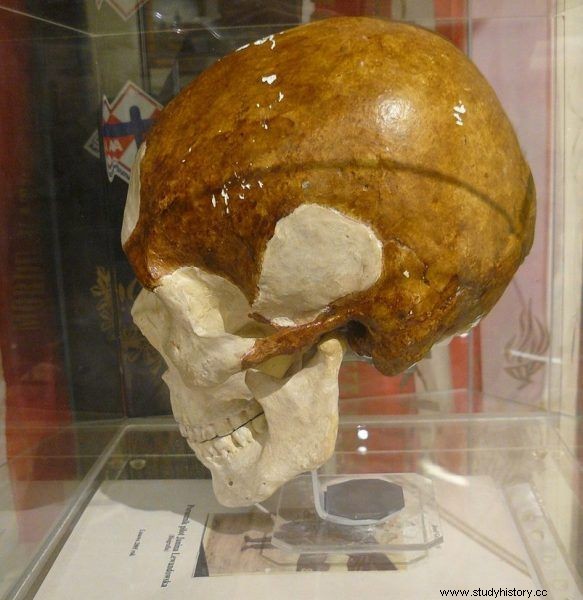
A model of the skull belonging to Janina Lewandowska. Currently it is in the collection of the Museum of Greater Poland Insurgents in Lusów.
The tragedy of Lewandowska's history is added by the fact that it was only by accident that she became one of the victims of the crime against representatives of the Polish military elite interned in the camps in Kozielsk, Starobielsk and Ostashkov. After all, she did not obtain an officer rank, although she came from a family with military traditions. She was educated herself to be ... a singer, although before the war she did not manage to achieve significant success in this field. She ended up in the military camp because of a borrowed uniform. Or an inherited surname.
If she had survived, perhaps she would have had a future as a pilot. She flew from an early age. She became the first woman to jump with a parachute from a height of 5 kilometers . "Courageous, brave, she made decisions quickly, extremely independent and with character" - summarizes her personality, biographer Józef Grajek. Unfortunately, this story ended prematurely.
